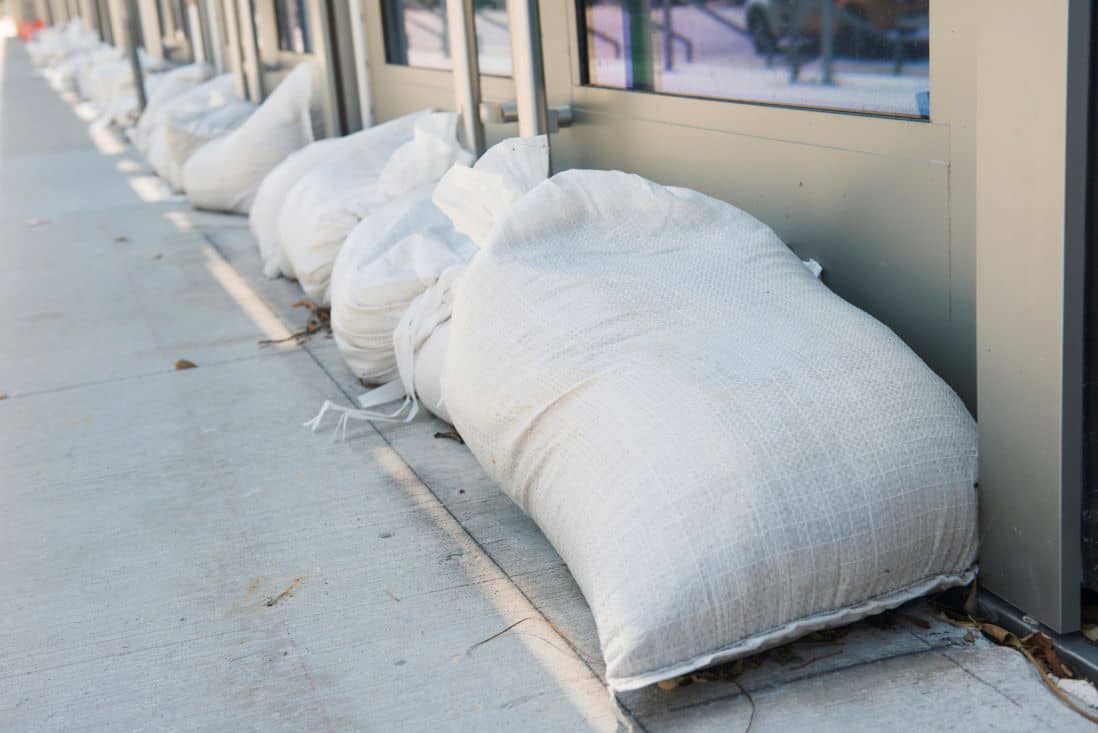It’s estimated the damage from the recent Hurricane Ian will cost over $67 billion [1] to repair, affecting residences, businesses, and local communities for years to come. And, of course, the loss of life is immeasurable. It’s for this reason that emergency preparedness is essential.
Natural disasters include flooding, tornados, earthquakes, droughts, extreme winds, hail, avalanches, and landslides. Human-made disasters can range from fires, chemical spills, and gas leaks to disease, rioting and even terrorist attacks. And any one of these can disrupt your organization quickly and significantly if you’re not ready to react immediately.
Why is an Emergency Preparedness Plan So Important?
Lives. Time. Money. Reputation.
All can be lost when disaster strikes. But how big an impact the emergency has on your business, employees and customers comes down to two key factors; the size and scale of the emergency, and how prepared you and your organization are to deal with it. The US Government created Ready.gov to emphasize the importance of disaster management planning and being ready to act before, during, and after an emergency.
Most businesses in areas hit hard, and often, by a certain kind of emergency are usually prepared for it in some way. However, due to a “it’ll never happen to us” outlook, many businesses remain sadly underprepared. Its why over-preparation is key when it comes to effectively preparing your organization for an emergency, and this is just one of the many pieces of advice we have taken from the hospitality industry.
So, Why Look to the Hospitality Industry Specifically for Guidance?
Any kind of emergency situation is going to present numerous challenges to residences and businesses. But if you’re in hospitality, healthcare, or other industry in which demand increases during an emergency, the challenges and stakes can escalate quickly when your customers’ safety, health, and wellness becomes your responsibility. While many organizations can batten down the hatches and ride out the impending storm – possibly even operating remotely – for a few days, not all organizations have that option. And when your customers are guests, the stakes are raised even higher.
For this reason, we looked to the safety team at Saybrook Point Resort & Marina, a leading resort in Old Saybrook, Connecticut, for their advice on emergency preparedness. This property features all the amenities of a high-end luxury resort – including a restaurant, bar, spa, pool, and ballroom – as well as a marina located at the mouth of the Connecticut River.
Each amenity is susceptible to emergencies and natural disasters in their own way, so Saybrook Point Resort & Marina’s staff are in a unique position that requires them to be able to handle most anything that’s thrown at them. Dealing with all of those separate-but-equally-important areas of the resort, plus the safety and security of hundreds of overnight guests, presents quite the challenge. And whether you’re in the hospitality industry or not, most any B2C or service organization can benefit from their emergency preparedness experience and insights.
How a Leading Resort and Marina Stays Ahead of the Game.


It all starts with superb preparation and planning, and of course, learning from previous incidents and applying that knowledge to future mitigation strategies. We talked to managing partner Stephen Tagliatela, safety team leader Chris Loader, and head of engineering Nick D’Acri about the often tricky, but essential, business of being ready for anything throughout an emergency and strategies for maintaining the safety and well-being of both staff and guests. Here are the top takeaways:
1. Establish and Maintain Strong Relationships with Local Municipalities
It’s not just what you know, it’s who you know – and emergency preparedness is no exception. Get to know your local police, fire department, medical, public works and other local municipalities and keep up your engagement and relationships with them. Emergency preparedness relationships are a partnership and a two-way street. Your organization may need their help, and they may need your organization's – before, during, and after an emergency. When you need their help (or they need yours), you want to be sure you (personally) know who you are calling and are confident they’ll answer when your business needs them the most. And in the case of Chris Loader, it goes even one step further.
In addition to being the head of the safety committee at Saybrook Point Resort & Marina, Chris Loader is also part of the local fire department and EMS, along with a few other staff. This connection continues to be a real asset for both the hotel and the local emergency services.
The same partner strategy also applies to your local and national vendors and suppliers. If you have a robust relationship with them, you can secure your priority position when it comes to getting your orders allocated for business-critical supplies and equipment. “When there's advanced warning of the storm, I reserve a bundle of plywood,” said Loader. “Because when it comes time to go and buy that stuff, it's never available.” Being prepared for an emergency may require being prioritized by your suppliers.
Lastly, remember to keep all of your important contact information and phone numbers in a place you and your team can easily find them (in addition to having them in your phone). You may not be on site or available, and it is important that all members of your staff are capable of being effective actors in the event of an emergency. Be sure to maintain close relationships with your key partners and keep your emergency preparedness contact list updated and easily accessible.
2. With Preparedness for Disaster Redundancy is a good thing.
Most business these days run lean. Warehouses are not filled with inventory like they were in the past, which contributed to the supply chain problems during and following the pandemic. But when it comes to emergency preparedness, you need to have ‘safety stock’ in place for critical elements of your business operations.
“There’s a lot of duplication,” said Tagliatela when asked about how his resort fares so well during disasters. “It’s not just one boiler, it’s four boilers. We don’t need four boilers to run the building.” The same applies to many other areas of the resort. “In the laundry system, there’s not just one washer, there’s three or four,” continued Tagliatela.
At the Saybrook Point Resort & Marina, the importance of redundancies even applies to their back-up power capabilities. In addition to having a large, on-site fuel tank to feed their 500-kilowatt emergency generator, “we have an additional fuel tank that’s designed for fueling boats,” said D’Acri. “But if we needed to, we could probably tap into that reserve, if we couldn’t get delivery.”
3. Communication with Employees and Customers is Essential.
We all know the problems that can happen during an emergency when communication breaks down. “With our employees, we have the ability to text them,” said Tagliatela, but when it comes to guests, it becomes more of a case-by-case situation. Depending on the severity of a storm, for example, “one of the policies we might have is if you're going to stay here, we don't want you to travel around in your car or be running around, because trees are falling,” continued Tagliatela. “And looking at the sights in 90 mile an hour winds isn't really that ideal.” While customers are free to make their own choices, every effort should be made to ensure your employees and customers are fully aware of the risks and recommendations during a major storm or natural disaster.
4. Stay Ahead of the Weather
It’s not just enough to check the weather app on your phone and the forecast on the local news station. Great safety preparedness means you need to know as far ahead as possible what’s coming, and just what you’ll be dealing with. “We have a lot of weather information coming through here,” said Tagliatela. “We're not interested in inches of rain; we're interested in tidal surge and wind direction. There's a huge difference in the direction of the wind, because we have exposure in the southeast and northeast.” In a nutshell, get familiar and specific with your facility’s unique risks and exposures.
5. Be Adaptable. Very Adaptable.
During an emergency is not the time to start talking about job titles or traditional roles and responsibilities. Sure, you may be working in the kitchen or could be the owner of the property; but when a disaster hits, it’s all hands-on deck doing anything and everything to keep the guests, staff and property safe and secure. Every employee at your organization inherently understands that in times of crisis, we need to do what we can when we can. Handing out water and food, putting up sandbags, boarding up windows, or simply checking on your colleagues or customers can all be part of the job when an emergency is facing your organization.
6. Be Ready to (Stay) Open for Business
If you’ve done everything right, and you’re more than ready for an impending disaster, it’s very possible that people within the local community may look to your business for support. In the case of Saybrook Point Resort & Marina, they are renowned in the area for being a safe and secure destination during inclement weather emergencies – a safe port resort, of sorts.
“We have a 500-kilowatt generator that sits in the front yard that’s got a hospital grade switch on it,” said D’Acri. “It’s near instantaneous that we resume power… and so a lot of people in the area consider this a place of refuge.”
An organizational commitment to emergency preparedness creates authentic vendor relationships and community connections that generate positive word-of-mouth for your organization.
In addition to establishing emergency policies, procedures, and communication strategies, you should also consider stocking up on the essential resources necessary to keep your staff safe and business operational. This is by no means a complete disaster survival kit list, but a starting point to ensure you and your teams have what you need at hand before it’s required. Any good preparedness kit should include:
- Back-up power options, including both portable and standby generators.
- Portable A/C, heaters, humidifiers and dehumidifiers.
- Winter Readiness products including ice melt, snow blowers, and survival kits.
- Storage and shelving to accommodate additional supplies.
- Safety products including gloves, traction spikes and PPE.
- Spill control products like spill kits, berms and stormwater management.
- Sandbags, weather-resistant barriers, and lumber for boarding windows
- Emergency food and water rations, especially if you’re expecting overflow
- Flashlights, whistles, two-way radios and portable first aid kits are essential
Remember, in an emergency the preparation you do before will heavily impact how your organization responds to and recovers from a disaster. By doing your research and stocking up now on crucial equipment and supplies, your organization is in a much better place to accommodate any emergency.
The inforation contained in this article is for informational, educational, and promotional purposes only and is based on information available as of the initial date of publication. It is the reader’s responsibility to ensure compliance with all applicable laws, rules, codes and regulations. If there is any question or doubt in regard to any element contained in this article, please consult a licensed professional. Under no circumstances will Global Industrial® be liable for any loss or damage caused by your reliance on this article.